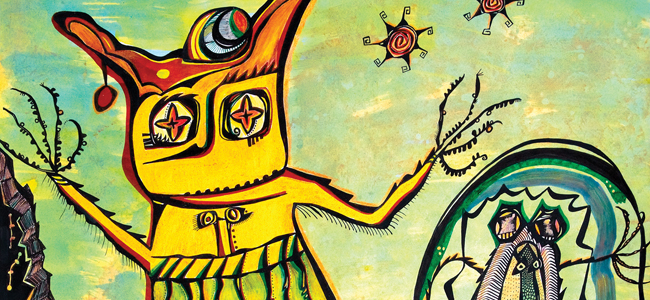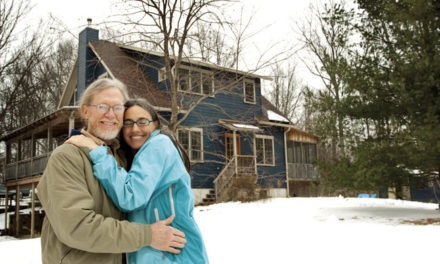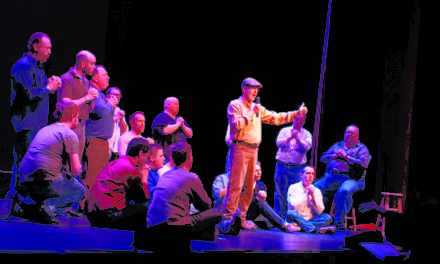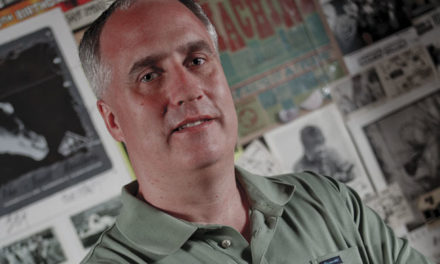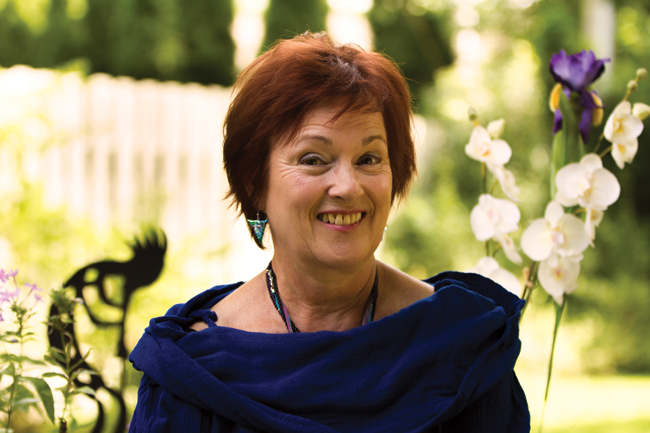
BY KELLY KENDALL
Dorothy Graden can glance at a carpet and imagine seeing petroglyphs. And if you don’t know what those are, it’s OK — most people don’t. Which is exactly what drives her work: photographing ancient rock art (including petroglyphs, images carved into rock) and translating the designs into drawings and paintings.
“I don’t know anybody who went through elementary school and learned about the prehistoric people who lived on this land,” says Graden. “So part of my vision is to open the eyes of people today, and show that there were people who went before.”
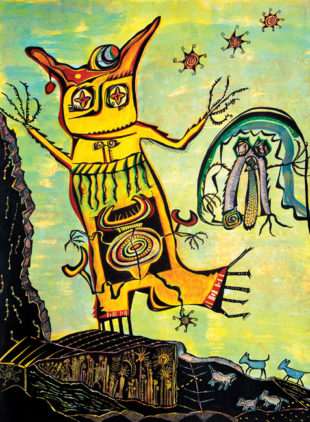
Graden has scaled buttes, descended into canyons, dodged rattlesnakes in the desert, and scrambled up cliffs, all to track down the work of early North American hunter-gatherers — some who lived up to 11,000 years ago. She’s presented those photographs as far afield as Russia and Ireland. In the last couple of years, she has interpreted the designs she’s found into black-and-white ink drawings as well as pastel, watercolor, and colored-pencil work.
Her canvas is pigmented cotton paper that Graden makes herself. “I see the petroglyphs kind of emerge from the paper, so I just kind of draw from there,” Graden says. She doesn’t try to reproduce her photos — instead, she uses elements and images from various pictures she’s taken in caves, mostly in the American West. “I’ll look at one of my photographs and get a feeling for what I would like it to say, to bring out how I felt about that panel as I was standing there looking at it,” she says. “It’s more of an inspiration, rather than copying.”
Graden loves exploring who lived on our land before Europeans arrived. “You can see it on the walls,” she says. “I’ve seen the big shields that they carried before horses arrived — they’re huge. They went all the way from their necks to below their knees.”
She hopes that viewers of her art experience the same sense of wonder. “What I want to do is open people’s eyes and say that there’s a huge history of the country that nobody is taught,” she says. “It’s almost as if that part of our history has disappeared.”
You can see Graden’s work at the Ivy Tech John Waldron Arts Center, where it kicks off with a reception on October 3 and will remain on display through November 1.


